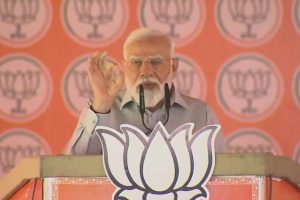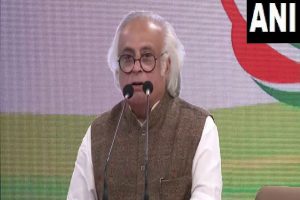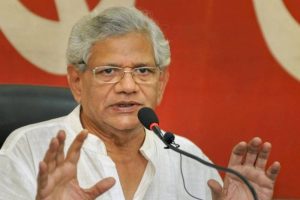COP 26 made all the right noises in supposedly the right direction, but the impact of this noise is yet to be seen by the world. Let us hope this time all the parties will stand up to their individual targets and work together for a better future.
To achieve this, there is a unanimous call to adopt ‘soft energy paths’ which can also help in achieving net-zero targets in some cases. Amory Lovins in 1977 introduced the term ‘Soft Energy paths’ in his book “Soft Energy Paths: Towards a Durable Peace” which discussed two paths of development, the hard energy path and the soft energy path.
The hard path includes rapid expansion of technologies to increase energy supply while the soft path proposes shifting from fossil fuel-based centralized energy systems towards adopting energy-efficient and renewable energy-based sources. Most countries are pledging to increase their renewable energy share to achieve the net-zero target.
Energy efficiency deserves the same attention as renewable energy. Improving energy efficiency is assumed to be the key to solve the “energy trilemma” which revolves around issues of energy security, environmental sustainability, and energy equity. Being energy efficient requires adopting technologies or appliances which can do the same work using lesser energy. It is important to note that energy conservation is different from energy efficiency.
Energy conservation requires change in behaviour towards energy consumption but for achieving energy efficiency new and improved technology is required. For example, switching off the light when not in use is energy conservation and using a fan which consumes less electricity as compared to conventional fans is energy efficient. In present times, when global energy consumption is increasing, fuel prices are rising, and people are working from home it is crucial to include energy efficiency as well as energy conservation in policy making.
Electricity consumption in the Indian domestic sector is estimated to increase to 842 TWh in 2030 and 1840 TWh by 2047 (estimates from Indian Energy Security Scenario, 2047). These estimations were made before the Covid-19 period and now, after the pandemic, electricity consumption of Indian households could further increase due to slow economic recovery and less income at disposal as it is likely that consumers will prefer buying cheaper and inefficient appliances if the ‘nudge’ towards achieving efficiency is not strong enough. This in turn will result in higher electricity consumption. As demand of electricity in households is bound to increase, it is crucial to understand how we consume this electricity.
We use electricity indirectly through our appliances to get various services, for example air-conditioners use electricity to provide us cooling. So, it is important for us to have those appliances which use efficient technology which in turn can provide better services using less electricity.
It is known that Indian markets have availability of energy efficient appliances, but they are not widely adopted by consumers (known as the energy efficiency gap). India Energy Outlook Report 2021 has noted that only one-third of televisions, refrigerators and air conditioners and over one-fourth of washing machines and water heaters used in 2020 were efficient, in that they were star labelled.
The reasons for slow adoption of efficient appliances can be many and include their cost, inadequate information about energy efficiency, presence of principal-agent problem (when tenants pay the bills rather than landlords which makes it less rewarding for them to make their property energy efficient), behavioral issues, lack of financial and institutional support, inability of shop keepers to inform consumers about energy efficiency at point of sale etc.
To reduce this gap, it is important to understand Indian consumer behaviour and factors affecting non-adoption of these efficient appliances. In the present situation, when most of us are working from home, our demand for electricity and technologies has increased and is bound to increase further. This makes it imperative to bring in more efficient technologies to the market and spread awareness about available standards and labels so as to enhance adoption of energy efficient technologies.
Firstly, it is important to conduct a nation-wide survey to collect data from Indian households to understand their electricity consumption and appliance ownership pattern. For this, the Bureau of energy efficiency may coordinate with the National Sample Survey Office (NSSO) as it undertakes nationwide consumer expenditure surveys at household level at regular time periods. This data could help researchers and policy makers alike and facilitate consumer-oriented policy making.
Secondly, information dissemination and awareness which is correct, easy to understand, responsible, affordable and less time consuming should be made available to consumers in general and especially at the point of sale of household appliances to help them make informed decisions. Distribution Companies can help in dissemination of information by tailoring information given to consumers on their electricity bills, that is through interactive details of energy units consumed, comparing usage of neighbours, giving names of energy savers and suggesting ways to effect electricity savings. Most importantly, advertisements and awareness campaigns should target rural and less educated population. Emphasis should be towards making them understand energy labels on their appliances.
Thirdly, it is evident that initial high price of energy-efficient appliances act as a deterrent. Providing financial assistance in the form of subsidy, rebate, discounts or even provision of equated monthly instalments (EMIs) to consumers may nudge consumers to buy more efficient appliances by removing the economic barriers.
Lastly, while walking on this soft energy path, we have to be cautious about the rebound effect in that shifting towards energy efficiency and renewable energy can actually result in an increase in energy consumption (Sorell, 2009). Energy consumption can increase by making energy appear effectively cheaper than other inputs and by increasing economic growth. This increase in consumption after adopting energy-efficient technology is called the Rebound effect. It reduces potential energy savings from improvements. Even though research has suggested that the size of the rebound effect ranges from very small to moderate, it is there.
More research is warranted towards measuring the rebound effect in India to ensure that energy efficiency fulfills its goal of achieving more with less energy. Achieving SDG-7 of access to clean and affordable energy will be difficult if we only focus on increasing energy production rather than the proper transmission and distribution and ensuring behavioral changes to save energy at the end-user level.
(The writer is Assistant Professor, Motilal Nehru College, University of Delhi.)











